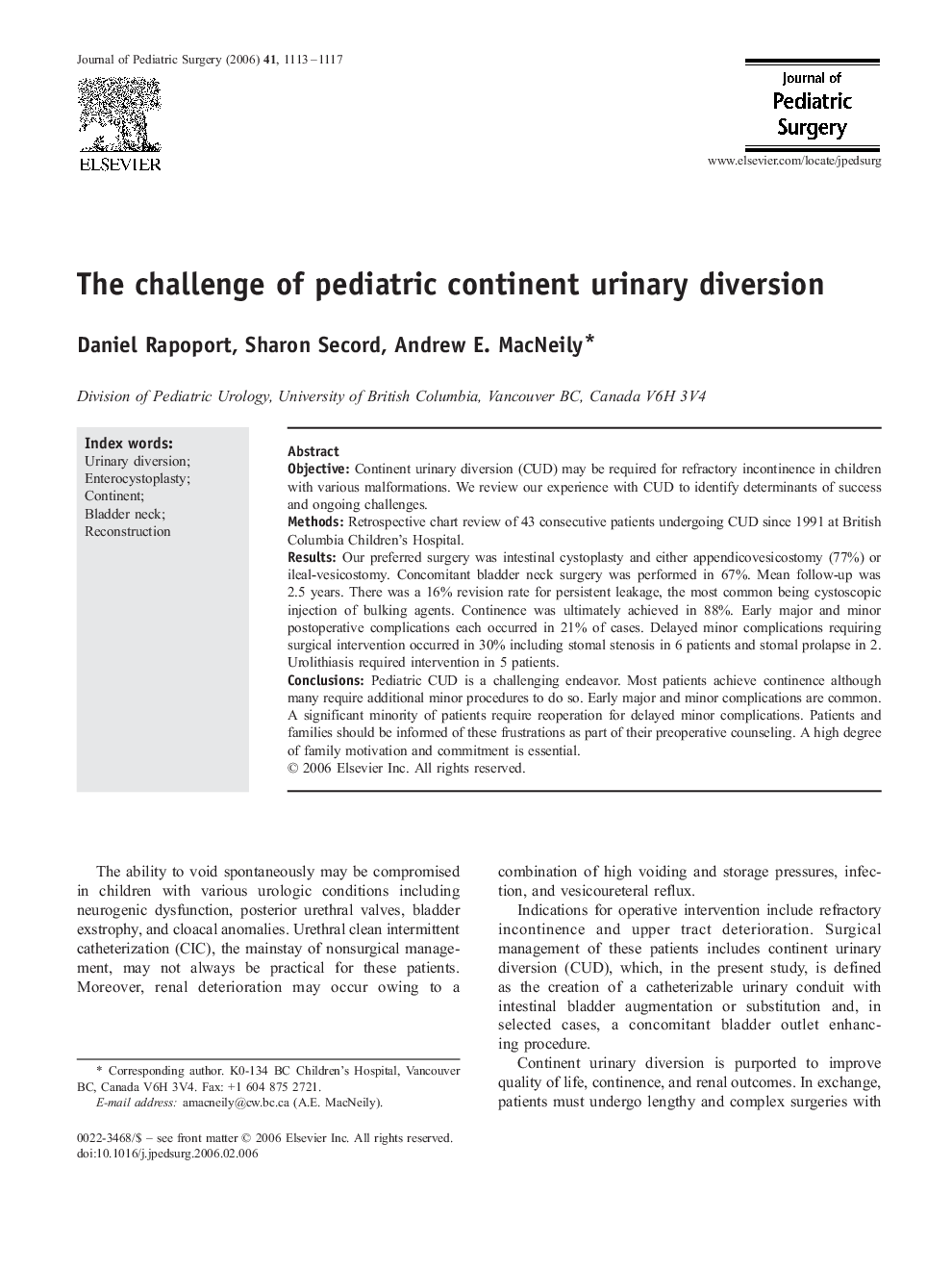| Article ID | Journal | Published Year | Pages | File Type |
|---|---|---|---|---|
| 4160241 | Journal of Pediatric Surgery | 2006 | 5 Pages |
ObjectiveContinent urinary diversion (CUD) may be required for refractory incontinence in children with various malformations. We review our experience with CUD to identify determinants of success and ongoing challenges.MethodsRetrospective chart review of 43 consecutive patients undergoing CUD since 1991 at British Columbia Children's Hospital.ResultsOur preferred surgery was intestinal cystoplasty and either appendicovesicostomy (77%) or ileal-vesicostomy. Concomitant bladder neck surgery was performed in 67%. Mean follow-up was 2.5 years. There was a 16% revision rate for persistent leakage, the most common being cystoscopic injection of bulking agents. Continence was ultimately achieved in 88%. Early major and minor postoperative complications each occurred in 21% of cases. Delayed minor complications requiring surgical intervention occurred in 30% including stomal stenosis in 6 patients and stomal prolapse in 2. Urolithiasis required intervention in 5 patients.ConclusionsPediatric CUD is a challenging endeavor. Most patients achieve continence although many require additional minor procedures to do so. Early major and minor complications are common. A significant minority of patients require reoperation for delayed minor complications. Patients and families should be informed of these frustrations as part of their preoperative counseling. A high degree of family motivation and commitment is essential.
